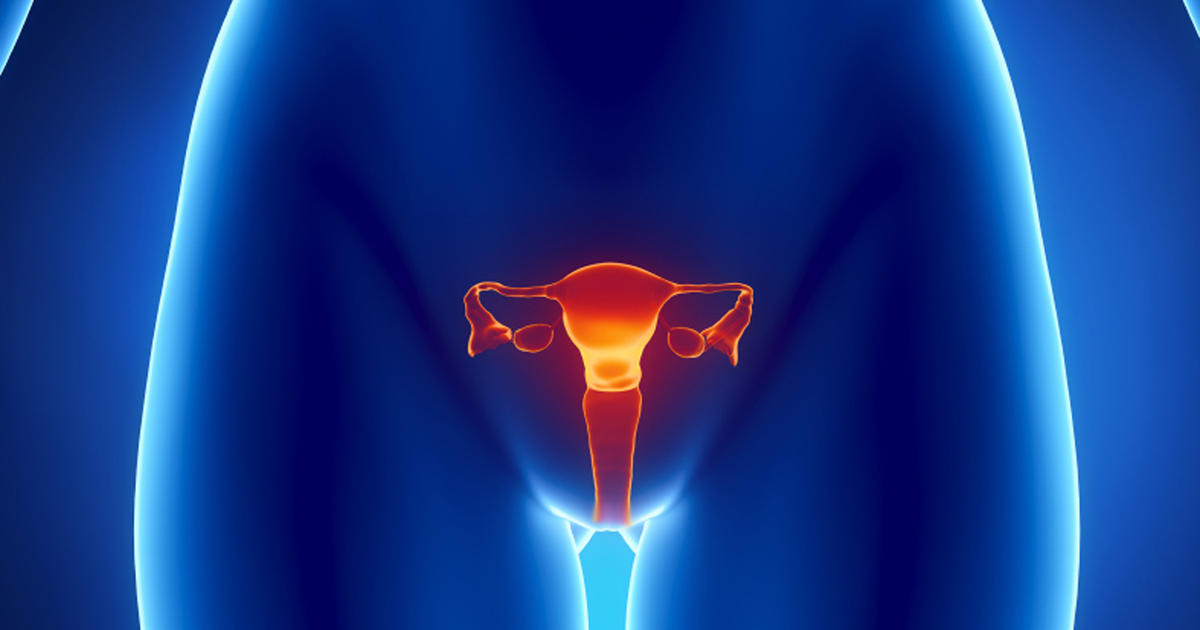You wake up in the morning and go on with your usual routine taking everything normally only to find out that you have swollen vagina area.
Swelling in the vagina region doesn’t necessarily mean the swelling is in the vagina. Swelling in the vagina consists of vaginal lips, labia minor or labia majora. It does not matter which region of the vagina is swollen. You need to know why because there are a variety of causes of swollen vaginal area depending on the area that’s affected, appearance and the related symptoms.
Swelling in the vulvar area is either localized or generalized. Generalized swelling is usually because of allergic, edematous or infectious causes. On the other hand, localized swelling is more likely caused by a hernia, abscesses or cysts. Read on to know some of the common causes and not so common causes of a swollen vagina.

Common Causes of Swollen Vagina
1. Allergy or irritation
An allergic reaction is believed to be one of the most common causes of a swollen vaginal area. A local allergic reaction leads to a generalized vaginal swelling. Irritation or allergic reaction takes place because of a certain kind of chemical that doesn’t suit you like sprays, creams, bubble baths, soaps, vaginal contraceptives or lubricants. It might surprise you, but it can even be caused by soaps or chemicals you have been using for a long time, maybe for years. Latex condoms can also result in an allergic reaction leading to vaginal swelling.
If these chemicals don’t cause an allergic reaction, but chemical irritation, then it may lead to swelling in the vulvar region. Such a condition is called as irritant contact dermatitis and the condition caused by an allergic reaction is known as allergic contact dermatitis.
2. Edema
Edematous swelling is basically a generalized swelling present around the vagina not just on one side but usually on both sides. It the skin remains swollen for quite some time, it starts showing changes. Edematous swelling is mostly due to inefficient drainage from the lymphatic system or improper venous drainage in the vaginal area. This poor drainage may be a result of a variety of causes. It may occur because of pregnancy as the growing uterus exerts pressure on the veins in the pelvis.
3. Cysts or abscesses
If you happen to notice swelling in a particular area of the vagina, it can be because an abscess or cyst that has clung to the wall of the vagina. Such abscesses and cysts can be caused by caused because of a lot of things like birth trauma. Cysts or abscesses can also develop around Gartner’s duct which is a part of the fetus and normally goes away after birth. Yet another reason for cysts is vaginal tumors and infected Bartholin’s glands that is present on both sides of the vaginal opening. It can also lead to abscesses.
4. Vulvovaginitis
This infection like the name suggests, affects the vagina and vulva. It is a common infection among women, despite their ages and may be caused by Yeast, bacteria, viruses, chemical irritants, environmental issues, allergens, parasites, and sexually transmitted infections. Two of the most common causes of vulvovaginitis are yeast and bacteria. Other common causes are parasites such as pinworms ,lice and human papillomavirus (HPV).
Vulvovaginitis results in swelling of vaginal lips. It is accompanied by other symptoms as well which appear before swelling. Other symptoms you should check out are inflammation, a lot of discharge, foul odor, painful urination, vaginal irritation and vulvar itching. If you experience these symptoms, go visit a doctor without any delay. He will diagnose you through a pap test. It is usually treated using antibiotics, antifungal creams, antihistamines, and antifungal pills.
5. Yeast infection
Yeast infection is not a sexually transmitted disease although it can be transmitted sexually. It is perhaps a very common infection that most women get due to sexual contact, but it can occur in women who are not sexually active.
Yeast infection is also called vaginal candidiasis as it happens because of the overgrowth of yeast known as Candida that usually resides in the vagina. Yeast infections are known to occur in moist areas. If a certain condition like stress, illness or pregnancy affects your immune system, then you are more at risk of a yeast infection. Even women who have a regular intake of birth control pills are at risk of yeast infection. It can also be caused by uncontrolled diabetes and intake of antibiotics.
Apart from swelling in the vagina, other symptoms of yeast infection is thick vaginal discharge with an appearance that of cottage cheese. It is usually treated with over the counter drugs and disappears in a week after getting proper treatment.
6. Bartholin’s Cyst
Bartholin’s gland is present on both sides of the vaginal opening. If this gland gets blocked, it results in cystic swelling which is called Bartholin’s cyst. The fluid present within the cyst frequently gets infected, causing a Bartholin’s abscess. Other such cysts can also form in the Gartner’s duct, which goes away after the birth of the child. It is only very rare that it may still continue to be. Another cystic swelling that is not so uncommon is called vaginal inclusion cyst.
7. Straddle injuries
Straddle injuries may cause vaginal swelling that should be properly evaluated, particularly if it is accompanied by symptoms like streaks of blood in urine, severe pain and others. This is determined on the basis of severity of the injury whether or not it needs immediate medical attention.
8. Atrophic vaginitis
Atrophic vaginitis is an infection that usually occurs after menopause. It is caused by thinning of the vaginal lining and lower levels of estrogen hormone which usually happens after menopause. This increases the tendency of the vagina to become irritated and swell. Vaginal atrophy makes you become more at risk of urinary tract infection and chronic vaginal infections.
Other symptoms associated with atrophic vaginitis include thick white discharge, burning, frequent urinary tract infection, vaginal dryness, narrowing of the vaginal canal, spotting after sex and uncontrollable urination.
If you suspect that you have atrophic vaginitis, consult a doctor. He will run few tests. The most common treatment of atrophic vaginitis happens to be estrogen replacement therapy, but it is recommended in severe cases. Oral estrogen and topical estrogen are other treatments for it.
9. Other Causes
Other causes for the swollen vaginal area can be skin infection called cellulitis that leads to swollen vulva and pain. Another cause of swollen vagina is cervicitis in which cervix gets infected and vaginal lips become swollen. When infections are left untreated, they lead to abscesses. Harmless or cancerous Vaginal tumor is yet another reason for a swollen vaginal area.
Some Lesser Known Causes of Swollen Vagina
Here are some of the causes of a swollen vagina that are not that common. These conditions or disorders can lead to vaginal swelling as well:
- Venous insufficiency– reduced flow of blood through veins in the vaginal region.
- Cellulitis- it is a bacterial skin infection that leads to swollen vagina.
- Heart failure- the heart is unable to pump properly and supply blood.
- Fournier’s Gangrene- a life-threatening bacterial infection that occurs in the genitals and spreads from the gastrointestinal or urinary tract to the whole body.
- Lymphedema- swelling results from a blocked or damaged lymphatic vessel
- Pregnancy– the growing uterus compresses the veins in the pelvis.
Symptoms associated with Vaginal swelling
- Some of the symptoms associated with swelling of vagina are:
- Inflammation resulting in swelling, redness and irritation of the vaginal area.
- Irritation and itching of vaginal area
- A lot of vaginal discharge
- Burning sensation and discomfort during urination
- Foul vaginal smell
When to go to a doctor
Vaginal swelling may be in need of immediate medical attention as certain cases of vaginal swelling are life-threatening. If you or your loved one notice following symptoms, you should immediately seek medical attention:
- More than 101 degrees Fahrenheit fever
- Extremely severe pain.
- Severe swelling.
- Tenderness
- Bleeding in general and even light spotting during pregnancy.
- Vaginal bleeding that cannot be controlled. If the blood is soaked by more than one sanitary pad in an hour for more than 2 hours, do not wait.
And also see your doctor without any delay:
- If you are breastfeeding or pregnant
- It’s the first time you got a yeast infection
- You are not sure which infection it is
- The infection keeps returning
- The treatment you tried isn’t working
- You have pelvic pain
- You notice colored or foul smelling vaginal discharge
- You are inflicted with a disease that is making your immune system weak like HIV
Treatment and prevention of Swollen Vagina
Some of these treatments are not safe to be used during pregnancy and some vaginal creams tend to make latex condoms weak. You need to talk to your doctor regarding safe usage of the prescribed medication or treatment. Nonprescription drugs are also available in stores. It is only best to take a doctor’s opinion before starting to use nonprescription products.
1. Consult Your Gynecologist
The first thing you should do if you have a swollen vagina, particularly with irritation, itching, or some illness, it to see the gynecologist without any delay. A swollen vagina that lasts for a more than a week and makes you really uncomfortable requires medical attention. Also, contact your doctor if the infection symptoms come back even after being treated.
2. Avoid Possible Potential Irritants
As soon as you get to know the cause of swollen vagina, make sure you stay away from any kind of chemicals like soaps that may trigger the swelling to come back. Chemical irritants are the most common cause of vaginal swelling. Try to avoid scratching as it can add up to the time required for healing, keep away from sexual intercourse and try to use fragrance-free laundry detergent till you are all good.
3. Use Lukewarm Water
This is something really important which most women don’t usually either know about or care about. Use lukewarm water after using the restroom and for taking a bath. In case of severe swelling, do not use toilet paper. Simply wash with lukewarm water. You might even want to sleep without the bottoms to give more air to the vaginal area.
4. Take Prescribed Medication
Antifungal pills are required if you have got a vaginal yeast infection. It can be taken care of either vaginally or orally. Some women tend to get yeast infections frequently. In case you have already got 4 of such infections in a year, you should talk to your doctor about it.There are gels, creams and antibiotic pills too to bring relief from vaginal swelling caused by bacterial infection or from a sexually transmitted disease (STD).
Some doctors may also prescribe a steroid cream or ointment to help get rid of itching, swelling and redness of vagina that is due to allergic or irritative vaginitis. It is crucial to figure out the cause of vaginitis so that you can avoid those irritants in the future. In case you are a patient of diabetes, keeping your blood sugar under control can prevent vaginitis. You can even add 4 to 5 tablespoons of baking soda in your bathing water and take a bath with it. It’s going to give you some relief.
5. Estrogen therapy
Infections like atrophic vaginitis are controlled through estrogen or lubricants like K-Y Jelly or a personal lubricant. However, estrogen therapy is not meant for everyone. Consult with your doctor to see if it is a suitable option for you.
Some useful tips
Here are some useful tips to not only help you keep your vaginal skin healthy but also keep vaginal infections at bay:
- Wear loose-fitting slacks
- Wear cotton underwear that is breathable lets some air in.
- Avoid wearing exercise clothes or bathing suits for a long time.
- Keep yourself away from pantyhose.
- Avoid prolonged friction or moisture like rubbing too vigorously or harshly with a towel.
- Maintain cleanliness of the genitals.
- Keep your genitals dry.
- Look for a different contraceptive if your skin is irritated by sponges, creams, jellies or lubricated condoms.
- Try to avoid potential irritants like perfumed or colored toilet paper, deodorized sanitary pads or tampons, feminine hygiene spray or douches
Resources
http://www.webmd.com/women/tc/bartholin-gland-cyst-topic-overview
http://www.webmd.com/women/guide/5-common-symptoms-of-a-yeast-infection
http://www.webmd.com/women/vaginal-itching-burning-irritation
http://www.mayoclinic.org/diseases-conditions/vulvodynia/basics/definition/con-20020326
http://www.nhs.uk/conditions/vaginitis/Pages/Introduction.aspx
Featured Image: cbsnews.com







